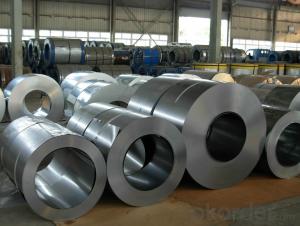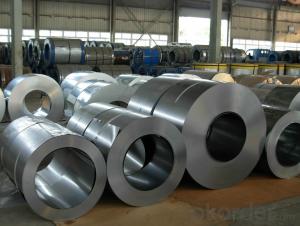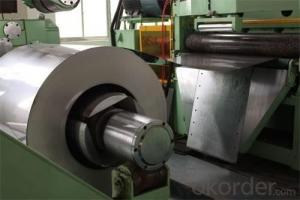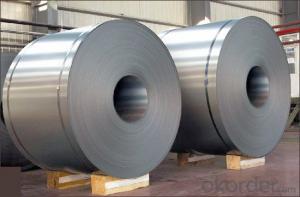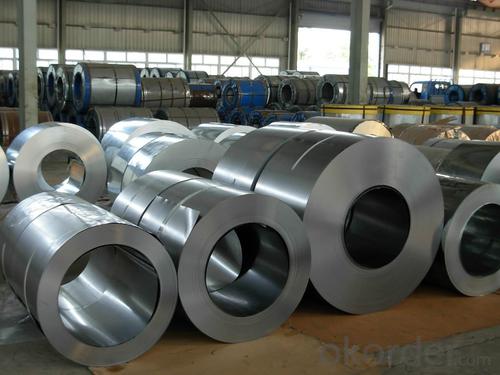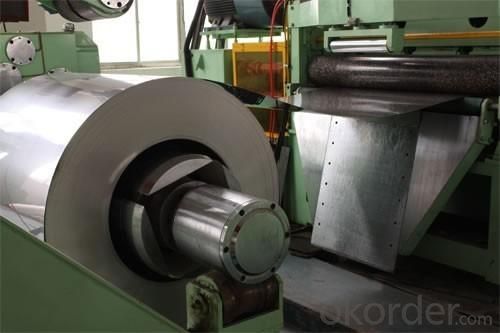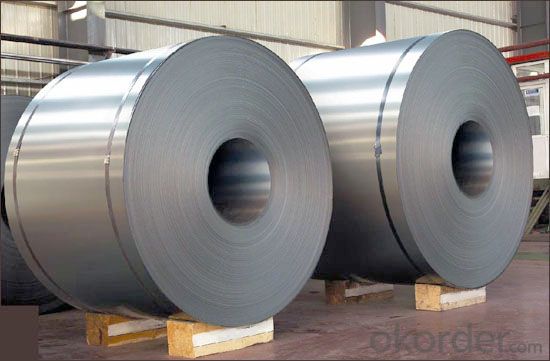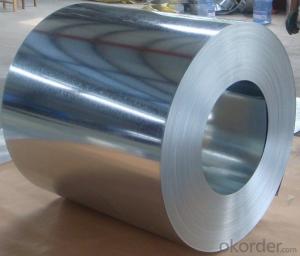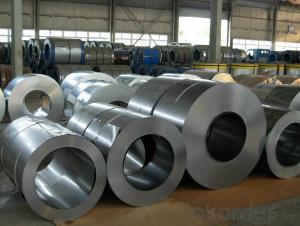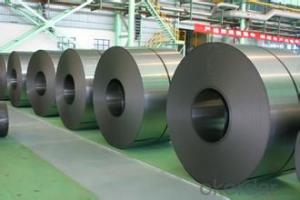Cold Rolled Steel Coil with Prime Quality various sizes and Lowest price
- Loading Port:
- Shanghai
- Payment Terms:
- TT OR LC
- Min Order Qty:
- 100 m.t.
- Supply Capability:
- 10000 m.t./month
OKorder Service Pledge
OKorder Financial Service
You Might Also Like
1.Structure of Cold Rolled Steel Description:
The raw material of cold rolled steel coil/sheet is high quality hot rolled product, and after pickling continuous rolling
3.Cold Rolled Steel Images
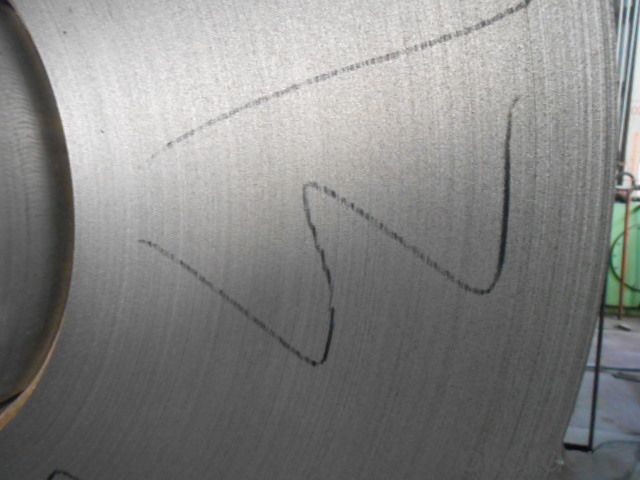
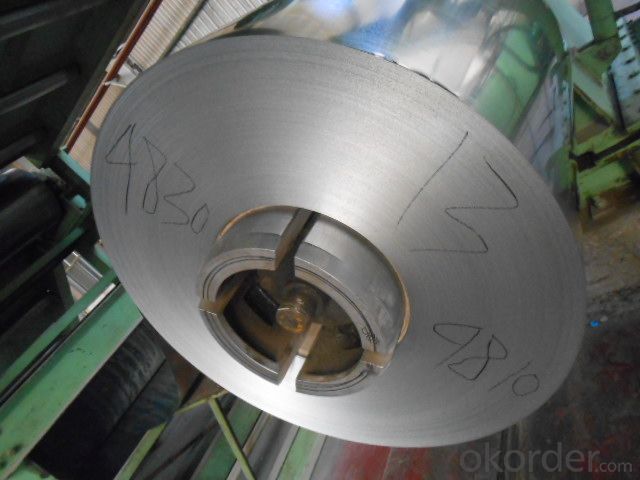
We have established the international advanced quality management system,every link from
4.Cold Rolled Steel Specification
Width: 1250,600-1250mm
Coil weight:3-12 MT
Standard:AISI,ASTM,DIN,GB,JIS,JIS G3302
Thickness: 0.16mm~1.5mm,0.16-1.5mm
2.Main Features of the Cold Rolled Steel:
• High strength
• Good formability
5.FAQ of Cold Rolled Steel
We have organized several common questions for our clients,may help you sincerely:
is one of the large-scale professional investment casting production bases in China
2.How to guarantee the quality of the products?
We have established the international advanced quality management system,
2.Main Features of the Cold Rolled Steel:
• High strength
• Good formability
- Q: I just bought a used Taurus 85 stainless 38 spl revolver, it's about 25 years old but looks like new. This is my first stainless steel gun. I'm wondering if there's any special things I need to be aware of or cleaning methods? I'm also wondering if stainless steel could rust? in theory stainless means it cannot get stained or rusty. I have a chrome bore AK, cleaning is always super easy, wondering of cleaning a SS revolver would be the same.
- Stainless steel WILL rust, but it takes longer. Just think of Stainless as stain less - less, but still present. Clean it as you would any other blued firearm. Keep the same coating of protective oil or preservative lubrican on it as you would a blued gun, and it will look shiny pretty much forever. Stainless steel is not rustproof...it is merely MUCH more forgiving of a harsh world than blued steel. Stainless is not the same as hard chrome. Stainless is STILL steel...so you may have to brush it in places a lot to get the crud out, especially after those thousand-round marathon shooting sessions. But the results are pretty impressive, as you will soon see. Happy shooting!
- Q: How do the sandpaper grits compare with different coarse levels of steel wool? For example, I'm finishing a homemade entertainment center, and using a tinted polyurethane, and it says to use 000 grade steel wool, but mine is #3, could I use some sanpaper instead, and what grit?
- 150 grit is standard for final sanding for poly. You could use 220 if you finish with something thinner like lacquer of if that's all you have. Even finer would work but not do much sanding.
- Q: im buying a sword and i dont know if i should buy a cold steel sword or a normal sword and that i can some how make that cold steel
- Cold Steel takes a billet (read piece of metal stock) in high carbon steel, usually 1060 which is pretty good, and then heats it up and pounds it into shape with a pre-made form. This is called forging. Their swords are not Folded (the traditional manner) they are Forged. This is different from taking a piece of 1060 steel and just grinding it down into shape. The forging process creates very strong steel (not as strong as folding) that is much stronger than a sword or knife made from grinding a piece of metal down into shape. Cold Steel's stuff is generally thicker, but they are practical and with enough practice you can wield it just like a thinner lighter sword. Their weapons are what you would call battle ready meaning you could feasibly take it into a sword fight and use it like its more traditionally crafted counter part. The only downfall is its weight and and the fact that it isn't as strong as a folded steel sword, but it would do very well.
- Q: Is sterling silver better than surgical steel as far as being hypoallergic in earrings? If I have a choice which should I get? Thanks!
- Surgical okorder /
- Q: How are steel coils used in the manufacturing of automotive springs?
- Steel coils are used in the manufacturing of automotive springs as they provide the necessary strength and flexibility required to support the weight of the vehicle and absorb shocks and vibrations. The steel coils are shaped and tempered to specific dimensions and then coiled to form the springs, which are then installed in various parts of the vehicle's suspension system to ensure smooth and stable ride quality.
- Q: What is the role of steel coils in the production of fencing materials?
- Steel coils play a crucial role in the production of fencing materials as they serve as the primary raw material for manufacturing wire mesh used in fences. These coils are unrolled and processed by machines to create the required gauge and size of wire. The wire is then woven or welded to form the fencing mesh, providing strength, durability, and security to the final product.
- Q: How do steel coils contribute to the automotive lightweighting trend?
- There are several ways in which steel coils contribute to the automotive lightweighting trend. Firstly, they are used in the production of advanced high-strength steels (AHSS), which offer a higher strength-to-weight ratio compared to traditional steel grades. These AHSS provide the same structural integrity as conventional steel but with less weight. By using AHSS in the construction of vehicle components such as body panels, chassis, and suspension systems, automakers can reduce the overall weight of the vehicle, leading to improved fuel efficiency and lower emissions. Additionally, steel coils are utilized in the manufacturing of tailor-rolled blanks (TRBs). TRBs are created by welding or bonding different steel grades together in a coil before stamping them into the desired shape. This method allows for the optimization of material usage, as stronger steel grades can be strategically placed in areas that require higher strength, while lighter grades can be used in less critical areas. This technique not only reduces weight but also enhances safety by reinforcing necessary areas of the vehicle. Furthermore, steel coils enable the production of thinner and more formable steel sheets. Advances in steelmaking technology have made it possible to develop thinner gauges without compromising strength and durability. Thinner steel sheets are easier to shape and form, making it possible to create complex and lightweight automotive parts. This not only reduces weight but also improves design flexibility and aerodynamics, resulting in enhanced performance and fuel efficiency. Moreover, steel coils contribute to cost-effectiveness in lightweighting efforts. Steel is a relatively affordable material compared to alternatives like aluminum or carbon fiber. By utilizing steel coils, automakers can achieve their lightweighting goals while keeping manufacturing costs under control. This affordability aspect is particularly important in the automotive industry, where cost considerations play a significant role in vehicle design and production. In conclusion, steel coils play a vital role in the automotive lightweighting trend by enabling the production of advanced high-strength steels, tailor-rolled blanks, thinner and more formable steel sheets, and cost-effective lightweight solutions. These advancements contribute to improved fuel efficiency, reduced emissions, enhanced safety, and increased design flexibility, all of which are crucial factors in the ever-changing automotive industry.
- Q: How do steel coil manufacturers handle international shipping requirements?
- Steel coil manufacturers ensure that their products meet transportation standards and regulations for international shipping. This involves following specific packaging requirements, using appropriate containers, and securing the coils to prevent damage during transit. In order to meet international shipping requirements, manufacturers must also comply with customs regulations and documentation. They need to prepare accurate and complete paperwork, such as commercial invoices, packing lists, and bills of lading, to ensure smooth customs clearance procedures. Furthermore, steel coil manufacturers often collaborate with freight forwarders or shipping agents who specialize in international logistics. These professionals have extensive knowledge of shipping regulations, routes, and carriers, and can assist with arranging transportation, negotiating freight rates, and handling necessary paperwork. Manufacturers may also choose to use intermodal transportation, which involves utilizing multiple modes of transportation like trucks, trains, and ships. This allows for more efficient and cost-effective shipping, especially for long-distance or international shipments. Additionally, steel coil manufacturers may consider obtaining insurance coverage to protect their products during transit. Insurance provides financial compensation in case of any damage, loss, or delays during the shipping process. Overall, steel coil manufacturers handle international shipping requirements through careful planning, adherence to regulations, collaboration with logistics experts, and consideration of various transportation options. This ensures that their products reach international destinations safely, on time, and in compliance with all relevant regulations.
- Q: How are steel coils protected against UV radiation?
- Steel coils are protected against UV radiation through a process known as coil coating. Coil coating involves applying a protective layer of paint or coating to the surface of the steel coil. This coating acts as a barrier between the steel and UV radiation, preventing direct exposure of the metal to the harmful effects of the sun's ultraviolet rays. The protective coating used for steel coils is specially formulated to provide excellent resistance against UV radiation. It typically contains pigments and additives that are designed to absorb or reflect UV light, reducing the amount of radiation that reaches the steel surface. Furthermore, the coating is applied in multiple layers to ensure maximum protection. The first layer, known as the primer, enhances adhesion to the steel surface and provides additional corrosion resistance. The subsequent layers, such as the base coat and topcoat, offer improved durability and UV resistance. In addition to the coating itself, the steel coils can be further protected against UV radiation by storing them in shaded areas or using covers to shield them from direct sunlight when stored outdoors. This additional precaution helps minimize the exposure of the coated steel coils to UV radiation, thereby prolonging their lifespan and maintaining their appearance. Overall, the combination of a high-quality protective coating, proper storage, and handling practices ensures that steel coils are effectively shielded against the damaging effects of UV radiation, allowing them to maintain their structural integrity and aesthetic appeal over an extended period of time.
- Q: How are steel coils used in the manufacturing of metal structures?
- Steel coils are commonly used in the manufacturing of metal structures as they provide a convenient and efficient way to shape and form various components. These coils are unrolled and then processed through machinery that cuts, bends, and shapes the steel into the desired size and shape. This allows for precise and consistent fabrication, making it easier to assemble and construct metal structures such as buildings, bridges, and machinery.
Send your message to us
Cold Rolled Steel Coil with Prime Quality various sizes and Lowest price
- Loading Port:
- Shanghai
- Payment Terms:
- TT OR LC
- Min Order Qty:
- 100 m.t.
- Supply Capability:
- 10000 m.t./month
OKorder Service Pledge
OKorder Financial Service
Similar products
Hot products
Hot Searches
Related keywords
